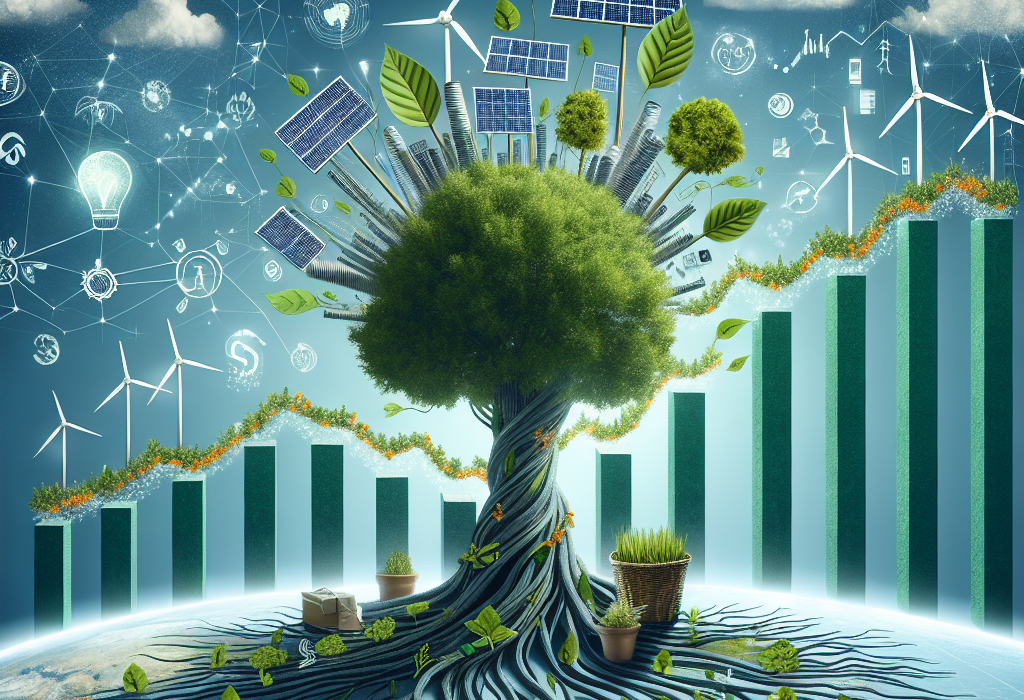Green Economy: How Sustainability is Shaping Future Growth
In recent years, the concept of a green economy has emerged as a pivotal focal point in discussions around sustainable development, environmental conservation, and economic growth. This economic model emphasizes the harmonization of economic development with the preservation of environmental resources, advocating for a future where growth does not come at the expense of ecological health. As the world grapples with the pressing challenges of climate change, resource depletion, and social inequality, the green economy offers a path towards sustainable prosperity.
Understanding the Green Economy
At its core, the green economy is one that results in improved human well-being and social equity, while significantly reducing environmental risks and ecological scarcities. It is an economy that is low-carbon, resource-efficient, and socially inclusive. The transition to a green economy involves a shift from the traditional industrial model, which often prioritizes profit at the expense of the environment, to one where long-term environmental sustainability becomes a central pillar of economic activities.
The Drivers of Change
Several factors are driving the global shift towards a green economy. The most pressing of these is the undeniable impact of climate change. With unprecedented weather events, rising global temperatures, and diminishing natural resources, the environmental imperatives for change are clear. In response, governments, businesses, and individuals are increasingly seeking sustainable alternatives that will reduce carbon footprints and conserve resources.
Technological innovation is another key driver. Advances in renewable energy technologies, such as solar and wind power, have made it possible to generate clean, affordable energy at scale. Meanwhile, innovations in energy storage, electric vehicles, and smart grid technologies are transforming how energy is consumed and managed. Such technologies not only reduce environmental impact but also present significant economic opportunities in terms of job creation and competitiveness.
Consumer preferences are also evolving. Today’s consumers are more environmentally conscious and demand products and services that are sustainable. Companies that respond to this demand by adopting green practices often find themselves with a competitive advantage and a loyal customer base.
The Role of Policy and Regulation
Governments play a critical role in fostering the green economy. Through policies and regulations, they can create incentives for businesses to adopt sustainable practices and invest in green technologies. Carbon pricing, subsidies for renewable energy, and strict environmental regulations are examples of how governments can steer economic activities towards sustainability.
Moreover, international agreements such as the Paris Agreement demonstrate the global commitment to addressing climate change and transitioning to a green economy. These treaties provide a framework for countries to align their policies and initiatives in pursuit of shared environmental goals.
Economic Opportunities and Challenges
The transition to a green economy presents significant economic opportunities. According to a report by the International Labour Organization, a shift towards a greener economy could create 24 million new jobs globally by 2030. Sectors such as renewable energy, energy efficiency, and sustainable agriculture are expected to see substantial growth.
However, the transition also poses challenges. Industries reliant on fossil fuels may face disruption, leading to economic and social challenges, particularly in communities dependent on these industries. It is crucial for policymakers to implement strategies that ensure a just transition, providing support and retraining opportunities for workers affected by these changes.
Conclusion
The green economy represents a transformative approach to economic growth and environmental sustainability. By prioritizing low-carbon, resource-efficient, and inclusive practices, it offers a pathway towards a sustainable future that benefits both people and the planet. As governments, businesses, and individuals increasingly embrace this model, the foundations are being laid for a new era of sustainable growth. While challenges remain, the potential for positive change is immense, heralding a future where prosperity is inextricably linked to the health of our natural world.

